Secondary Placental Defects in Cxadr Mutant Mice
- PMID: 31338035
- PMCID: PMC6628872
- DOI: 10.3389/fphys.2019.00622
Secondary Placental Defects in Cxadr Mutant Mice
Abstract
The Coxsackie virus and adenovirus receptor (CXADR) is an adhesion molecule known for its role in virus-cell interactions, epithelial integrity, and organogenesis. Loss of Cxadr causes numerous embryonic defects in mice, notably abnormal development of the cardiovascular system, and embryonic lethality. While CXADR expression has been reported in the placenta, the precise cellular localization and function within this tissue are unknown. Since impairments in placental development and function can cause secondary cardiovascular abnormalities, a phenomenon referred to as the placenta-heart axis, it is possible placental phenotypes in Cxadr mutant embryos may underlie the reported cardiovascular defects and embryonic lethality. In the current study, we determine the cellular localization of placental Cxadr expression and whether there are placental abnormalities in the absence of Cxadr. In the placenta, CXADR is expressed specifically by trophoblast labyrinth progenitors as well as cells of the visceral yolk sac (YS). In the absence of Cxadr, we observed altered expression of angiogenic factors coupled with poor expansion of trophoblast and fetal endothelial cell subpopulations, plus diminished placental transport. Unexpectedly, preserving endogenous trophoblast Cxadr expression revealed the placental defects to be secondary to primary embryonic and/or YS phenotypes. Moreover, further tissue-restricted deletions of Cxadr suggest that the secondary placental defects are likely influenced by embryonic lineages such as the fetal endothelium or those within the extraembryonic YS vascular plexus.
Keywords: Cxadr; fetal circulation; fetal heart; placenta; placenta-heart axis.
Figures
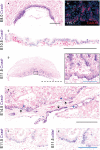
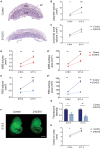
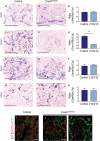
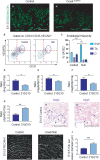
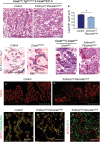
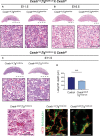

Similar articles
-
Inositol 1,4,5-trisphosphate receptors are essential for fetal-maternal connection and embryo viability.PLoS Genet. 2020 Apr 22;16(4):e1008739. doi: 10.1371/journal.pgen.1008739. eCollection 2020 Apr. PLoS Genet. 2020. PMID: 32320395 Free PMC article.
-
Trophoblast-specific reduction of VEGFA alters placental gene expression and maternal cardiovascular function in mice.Biol Reprod. 2014 Oct;91(4):87. doi: 10.1095/biolreprod.114.118299. Epub 2014 Aug 13. Biol Reprod. 2014. PMID: 25122061
-
Type 1 and 3 inositol trisphosphate receptors are required for extra-embryonic vascular development.Dev Biol. 2016 Oct 1;418(1):89-97. doi: 10.1016/j.ydbio.2016.08.007. Epub 2016 Aug 8. Dev Biol. 2016. PMID: 27514653
-
Development of the Human Placenta and Fetal Heart: Synergic or Independent?Front Physiol. 2018 Apr 12;9:373. doi: 10.3389/fphys.2018.00373. eCollection 2018. Front Physiol. 2018. PMID: 29706899 Free PMC article. Review.
-
Placental formation in early pregnancy: how is the centre of the placenta made?Hum Reprod Update. 2018 Nov 1;24(6):750-760. doi: 10.1093/humupd/dmy030. Hum Reprod Update. 2018. PMID: 30257012 Review.
Cited by
-
Analysis of Genomic Alterations Associated with Recurrence in Early Stage HER2-Positive Breast Cancer.Cancers (Basel). 2022 Jul 27;14(15):3650. doi: 10.3390/cancers14153650. Cancers (Basel). 2022. PMID: 35954313 Free PMC article.
-
Disruption of Folate Metabolism Causes Poor Alignment and Spacing of Mouse Conceptuses for Multiple Generations.Front Cell Dev Biol. 2021 Dec 10;9:723978. doi: 10.3389/fcell.2021.723978. eCollection 2021. Front Cell Dev Biol. 2021. PMID: 34957089 Free PMC article.
-
Single-cell RNA sequencing identifies CXADR as a fate determinant of the placental exchange surface.Nat Commun. 2025 Jan 2;16(1):142. doi: 10.1038/s41467-024-55597-w. Nat Commun. 2025. PMID: 39747179 Free PMC article.
-
Feto-placental blood vessel development.Development. 2025 Jun 1;152(11):dev204838. doi: 10.1242/dev.204838. Epub 2025 Jun 2. Development. 2025. PMID: 40454573 Free PMC article. Review.
-
Analysis of Placental Arteriovenous Formation Reveals New Insights Into Embryos With Congenital Heart Defects.Front Genet. 2022 Jan 19;12:806136. doi: 10.3389/fgene.2021.806136. eCollection 2021. Front Genet. 2022. PMID: 35126469 Free PMC article.
References
LinkOut - more resources
Full Text Sources
Molecular Biology Databases

